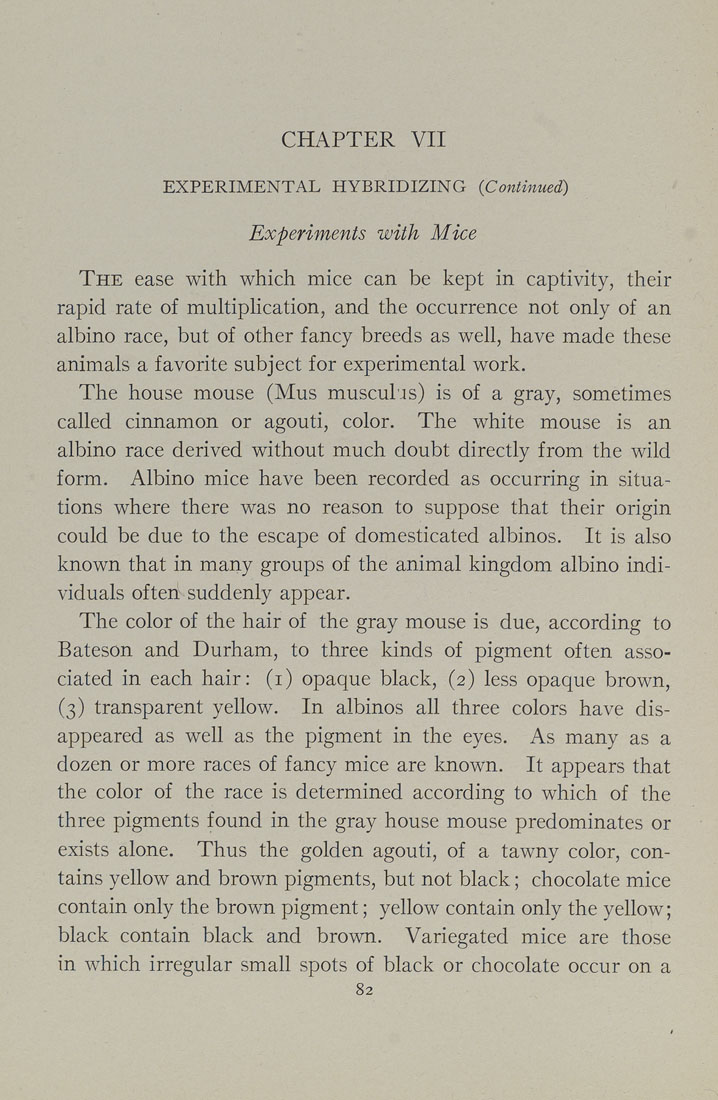CHAPTER VII
EXPERIMENTAL HYBRIDIZING {Continued)
Experiments with Mice
The ease with which mice can be kept in captivity, their
rapid rate of multiplication, and the occurrence not only of an
albino race, but of other fancy breeds as well, have made these
animals a favorite subject for experimental work.
The house mouse (Mus musculos) is of a gray, sometimes
called cinnamon or agouti, color. The white mouse is an
albino race derived without much doubt directly from the wild
form. Albino mice have been recorded as occurring in situa¬
tions where there was no reason to suppose that their origin
could be due to the escape of domesticated albinos. It is also
known that in many groups of the animal kingdom albino indi¬
viduals often suddenly appear.
The color of the hair of the gray mouse is due, according to
Bateson and Durham, to three kinds of pigment often asso¬
ciated in each hair: (i) opaque black, (2) less opaque brown,
(3) transparent yellow. In albinos all three colors have dis¬
appeared as well as the pigment in the eyes. As many as a
dozen or more races of fancy mice are known. It appears that
the color of the race is determined according to which of the
three pigments found in the gray house mouse predominates or
exists alone. Thus the golden agouti, of a tawny color, con¬
tains yellow and brown pigments, but not black; chocolate mice
contain only the brown pigment; yellow contain only the yellow;
black contain black and brown. Variegated mice are those
in which irregular small spots of black or chocolate occur on a
82
|








